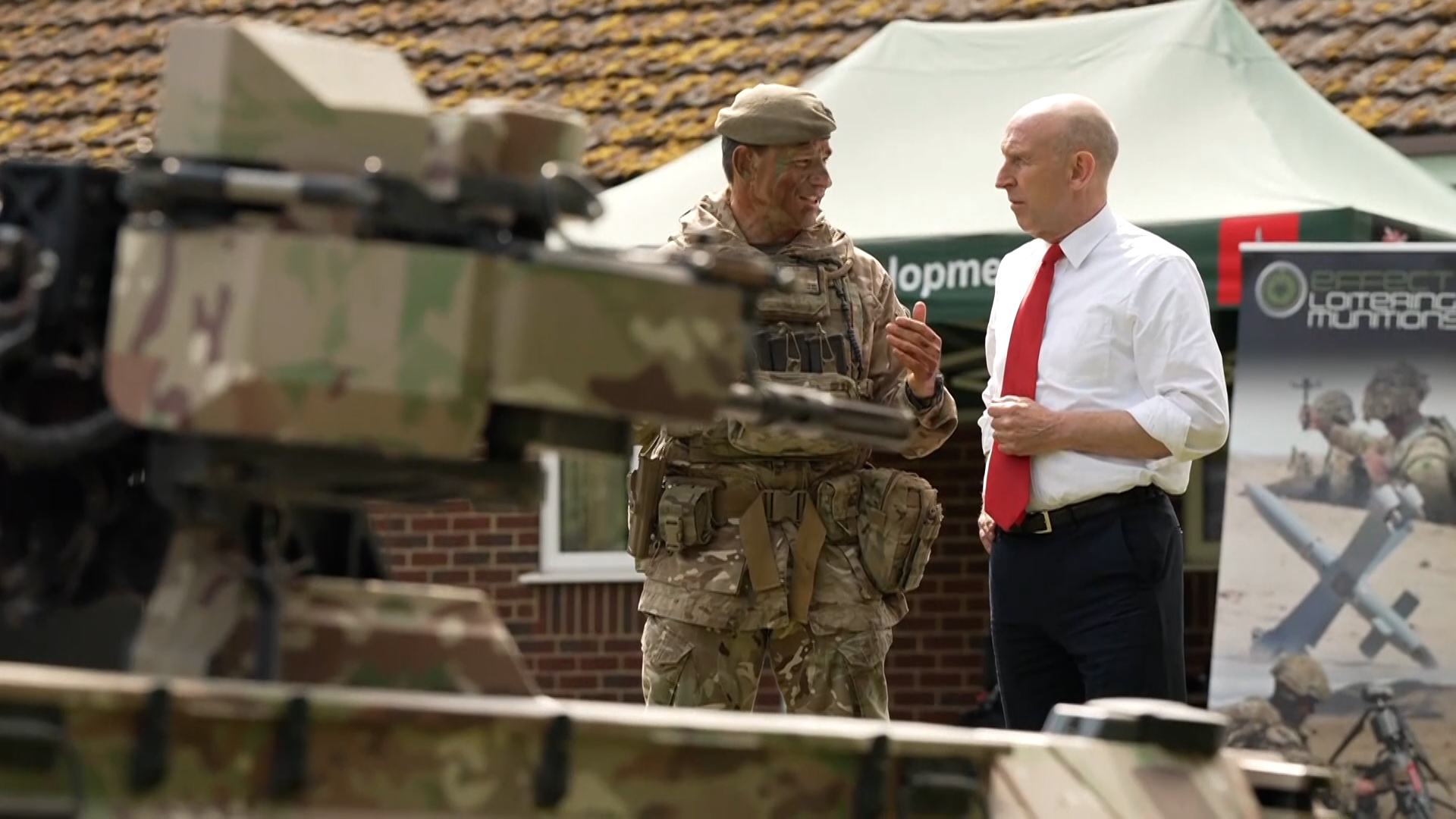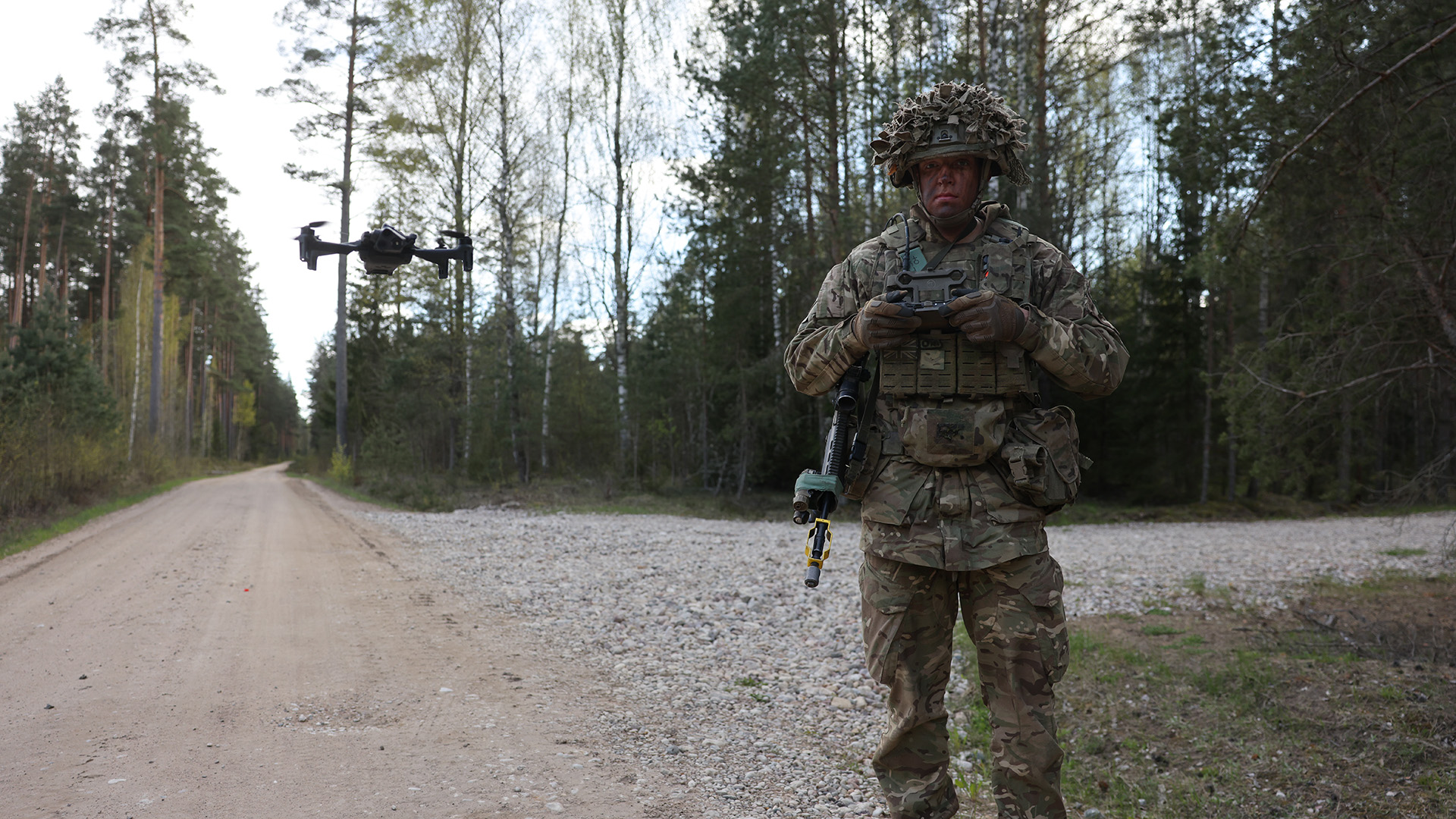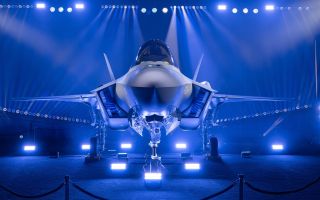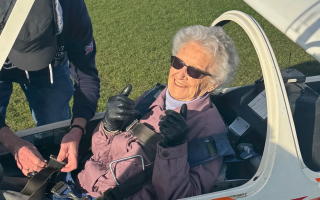Healey meets 'lads and lasses' who will help develop and deliver SDR's ten-times lethality
Following the long-awaited Strategic Defence Review, Defence Secretary John Healey boarded a Chinook to meet for himself the men and women who will have to put many of its recommendations into action.
After a short flight, he touched down at Warminster Garrison, home to the British Army's Experimentation and Trials Group.
Mr Healey spoke to BFBS Forces News' Simon Newton as he visited troops at the Army Warfare Centre at Warminster.
He elaborated on the recommendations in the SDR, which says the Army needs to modernise, restructure and be ready for war.
"These are the lads and lasses that are going to help develop and deliver that ten-times lethality," he said.
"What it really means is being able to see the enemy further, decide how to hit them faster and strike them harder.
"It's the combination of the hard metal and the traditional platforms of tanks, artillery... combined with the innovation of AI and drones... that will allow our British forces in future to do that.
"The Strategic Defence Review... made clear that's a lesson we can take from the Ukraine and for those nations that can make that combination for their forces, they will give their troops – their forces – the battlefield edge in future."

While there were no cuts announced in the SDR, the British Army isn't going to dramatically increase in size.
That spike in lethality will come in large part from new technology.
While at Warminster, Mr Healey was able to try his hand at piloting an FPV drone and driving one of the Army's remote-controlled uncrewed ground vehicles (UGV).
It is technology that is going to become increasingly important as the UK pivots to what the review calls a state of warfighting readiness.
"We could do none of this without the big increase in defence spending that we as a government have now committed," Mr Healey added.
"We've made that difficult decision to switch money directly out of overseas development aid, so we can fund the promise we made at the election to meet 2.5% of spending on defence – not in 2030, but three years earlier than that, in 2027."

The government has also announced a tenfold increase in drone deliveries to Ukraine, with tens of thousands already shipped and a target of 100,000 by April 2026.
The lessons from that conflict are feeding through as the British military transitions to an era of high-tech, autonomous warfare.









